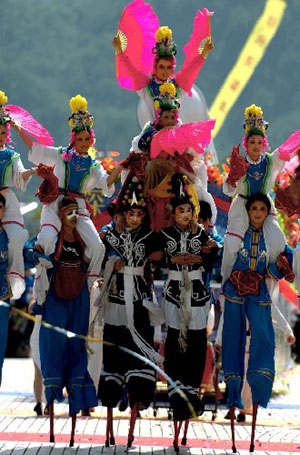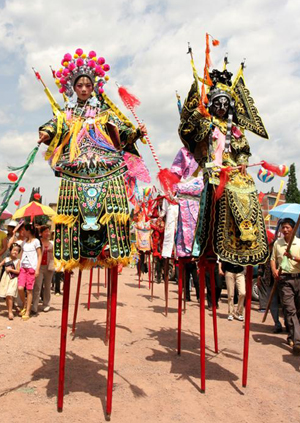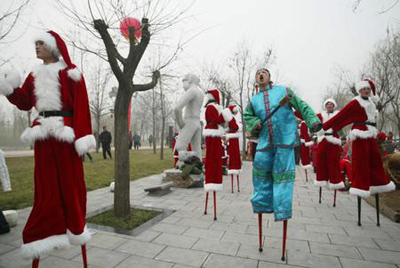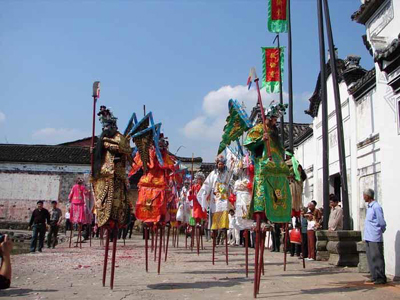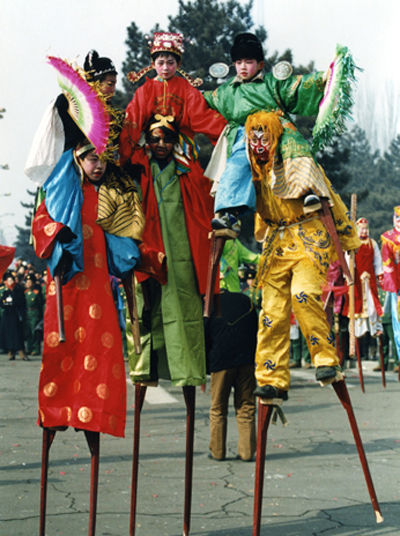| Home / Spring Festival 2007 / Customs | Tools: Save | Print | E-mail | Most Read |
| Walking on Stilts |
| Adjust font size: |
Gaoqiao performance requires high skills and varies in forms. Usually the performers tie two long stilts to their feet, making them higher than others when standing on stilts. On their "moving stage", they are deeply loved by masses. Most stilts used today are made from wood. There are "double stilts" and "single stilt" performances. The double stilts are usually tied to one's legs to fully demonstrate his skill; the single stilt is held by the performer so that he can go up and down freely. The performance can also be divided into "Wenqiao" (the civil one) and "Wuqiao" (the martial one). The former stresses appearance and amusement, while the latter emphasizes the individual's unique skill. Gaoqiao has now also assumed strong local flavor and national color.
In Beijing and Tianjin, performers show their high skills by jumping on one foot or going through obstacles. Some performers can even jump down from four stacked tables on one foot. In Northeast China's Liaoning Province, Gaoqiao is the most famous. It has complete performance routines and a standard form. At first, performers must "Daxiang," that is, one stands on the shoulder of another and does a yangko dance. Then they run to change queue formations. At last, they perform in groups including pair dancing, "catching butterflies," "fishing," and small local operas, etc. Ethnic groups, when performing Gaoqiao, usually wear clothes of their own nationality. The Bouyei ethnic group has both double stilts and single one; children especially love the single stilt format, due to its simplicity. In "Gaoqiao Shuama" of the Bai ethnic group, performers are dressed like a horse. The "Two-Person Gaoqiao" of the Uygur ethnic group blends their local dance in it, which is new and fresh.
(China.org.cn February 13, 2007) |
| Tools: Save | Print | E-mail | Most Read |
 |
| Related Stories |
